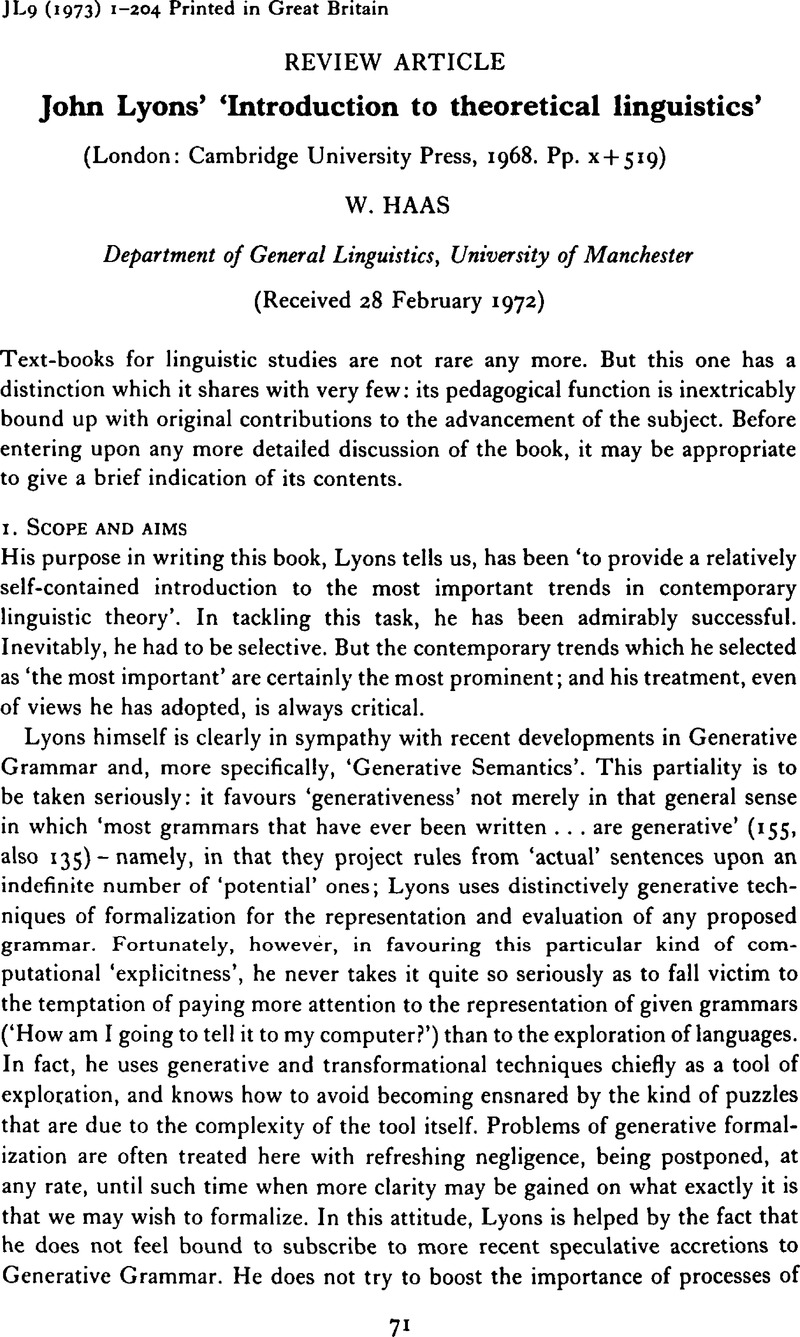Crossref Citations
This article has been cited by the following publications. This list is generated based on data provided by Crossref.
Allerton, D. J.
1974.
Ekkehard König, Adjectival constructions in English and German: a contrastive analysis. Heidelberg: Julius Groos Verlag, 1971. Pp. 186..
Journal of Linguistics,
Vol. 10,
Issue. 2,
p.
302.
Lucas, M.A.
1975.
The syntactic classes of antenominal adjectives in English.
Lingua,
Vol. 35,
Issue. 2,
p.
155.
Sinha, Anil C.
1978.
On the status of recursive rules in transformational grammar.
Lingua,
Vol. 44,
Issue. 2-3,
p.
169.
LUCAS, MICHAEL A.
1978.
THE NOMINAL GROUP IN SYSTEMIC GRAMMAR.
Linguistics,
Vol. 16,
Issue. 204,
p.
25.
UHLENBECK, E. M.
1979.
The European Background of American Linguistics.
Allerton, D.J.
1984.
Three (or four) levels of word cooccurence restriction.
Lingua,
Vol. 63,
Issue. 1,
p.
17.
Connolly, John H.
1990.
Exploiting functional structure at the grammatical level.
Clinical Linguistics & Phonetics,
Vol. 4,
Issue. 1,
p.
1.





